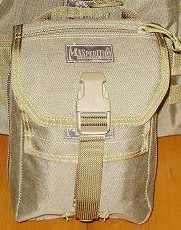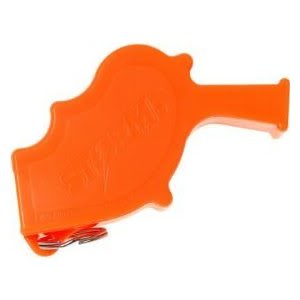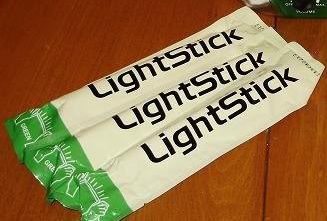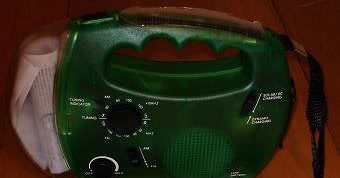Bug Out Bag Essentials : First Aid & Rescue Supplies
Now we dive into the topic of First Aid. This can get as simple or as elaborate as you care to take it. You may just pack a few band-aids and some medicine, or you may go with a complete trauma kit.
Here is a good rule of thumb for packing your first aid kit
Contents
Don’t bother packing anything you aren’t prepared or know how to use. If you don’t know how to treat a sucking chest wound and don’t plan on learning, then don’t bother packing for it. Let’s be realistic, if you aren’t a doctor or don’t play one on T.V., then don’t plan to act like one. You could do more harm than good.
So with that being said, what kind of stuff should you plan for?
Well, you may possibly be on foot, so plan for injuries or ailments that may occur that way. Sprained ankles, a possible broken limb, scratches and abrasions, etc. Your diet may change in this new event so it may be in your best interest to plan for…shall we say….digestive issues? If you have any prescriptions that you need regularly, be sure and pack those as well. Are you allergic to bee stings? If so, you’d better make sure you have an EpiPen in there.
It is imperative that you know or learn how to use everything in your first-aid kit correctly. If you want to pack something and don’t know how to use it, then get a book and learn, or better yet, take a class. The things you can learn about first-aid will stay with you the rest of your life.
 My first-aid kit on my bug out bag is a Maxpedition F.I.G.H.T pack that is attached via MOLLE attachments, but depending on the size of your kit, it can be packed into the bag as well. I like the way the F.I.G.H.T. works because it attaches to the pack securely, but can quickly be removed if necessary and taken right to where it is needed.
My first-aid kit on my bug out bag is a Maxpedition F.I.G.H.T pack that is attached via MOLLE attachments, but depending on the size of your kit, it can be packed into the bag as well. I like the way the F.I.G.H.T. works because it attaches to the pack securely, but can quickly be removed if necessary and taken right to where it is needed.
Rescue
So let’s say you have managed to survive for 3 days with your bug out bag, and now you are starting to see firemen, or cops, or someone coming with the means for rescue. This is pretty straight forward too…you basically need to get their attention. Here you will need to plan for both a daylight and a night rescue, because you won’t know when they are coming.
Some ideas for a day rescue are making a fire so that someone can see the smoke. Or if time is of the essence, a signaling mirror. A bright orange poncho can serve other purposes besides shelter or keeping the rain off of you. It will really make you stand out in almost any environment.
Storm Whistle
 A whistle is a must have for your bug out bag as well. If you happen to be in a situation where you can’t get close enough to your rescuers for them to see you, you are probably going to be doing a lot of yelling. This will sap a LOT of your energy and possibly make you lose your voice. A whistle will be much louder and take less effort on your part, so be sure and pack it!
A whistle is a must have for your bug out bag as well. If you happen to be in a situation where you can’t get close enough to your rescuers for them to see you, you are probably going to be doing a lot of yelling. This will sap a LOT of your energy and possibly make you lose your voice. A whistle will be much louder and take less effort on your part, so be sure and pack it!
A whistle can be the difference between life and death in a rescue situation. If you are in a situation where you need to attract the attention of rescuers, you can’t guarantee they are going to hear your cries for help even in a quiet environment. Now take into account the possibility that there may be a lot of noise in your surroundings like high winds, or the sound of crashing water, or maybe even explosions. If you have been surviving for more than a few hours, you may not even have the energy to yell loud enough for help.
If you are building your bug out bag, why not spend the six or so dollars this whistle costs for the peace of mind that you didn’t just settle for any old whistle that in a crunch will fail you? Plus, it is a nice bright orange, so if you were to drop it, you could easily find it. But do yourself a favor when you get it, do one test blast…alone…and in the middle of nowhere with no one within miles. Then put it in your bug out bag or disaster kit and live happy with just leaving it there until it is needed. You don’t have to follow my advice, but your family knows where you sleep.
Lightsticks & Flashlight
At night it will be all about lights and sound. The whistle will be very effective here, but you will need a light for rescuers to home in on as well. Flashlights are great and I even have a mini MagLite that has a setting for flashing S.O.S. in morse code over and over again.  But one of my favorite things to pack for a rescue is a chemical light stick. Tie a length of paracord to it and spin it in a large circle and you greatly increase your visibility to rescuers.
But one of my favorite things to pack for a rescue is a chemical light stick. Tie a length of paracord to it and spin it in a large circle and you greatly increase your visibility to rescuers.
One word of advice when dealing with rescue is to take a few moments to make sure the people you see coming your way look like they have good intentions. If you see starving people that look desperate, you may not want to give away your location unless you have the means to help them instead. In a perfect world, you would have nothing to worry about, but this isn’t a perfect world and you are far from perfect circumstances, so just use some common sense here.
This may seem like a no brainer, but how about a cell phone? Well, you probably have one and will most likely have it with you but did you know that that old cell phone rattling around in your junk drawer can still be used as well? Any cell phone that can be turned on and receive a signal must be able to dial 911 according to federal law. That means you could pack it in your bug out bag and in the unlikely event that you are in a hurry to get out the door and can’t find your cell phone, you have a back-up.
Radio
 Another thing you will want in your bag is a good radio receiver. If there is a major disaster, you are going to need to be able to hear any news that may be broadcast about locations of medical assistance, assembly locations, or possibly locations to avoid.
Another thing you will want in your bag is a good radio receiver. If there is a major disaster, you are going to need to be able to hear any news that may be broadcast about locations of medical assistance, assembly locations, or possibly locations to avoid.
